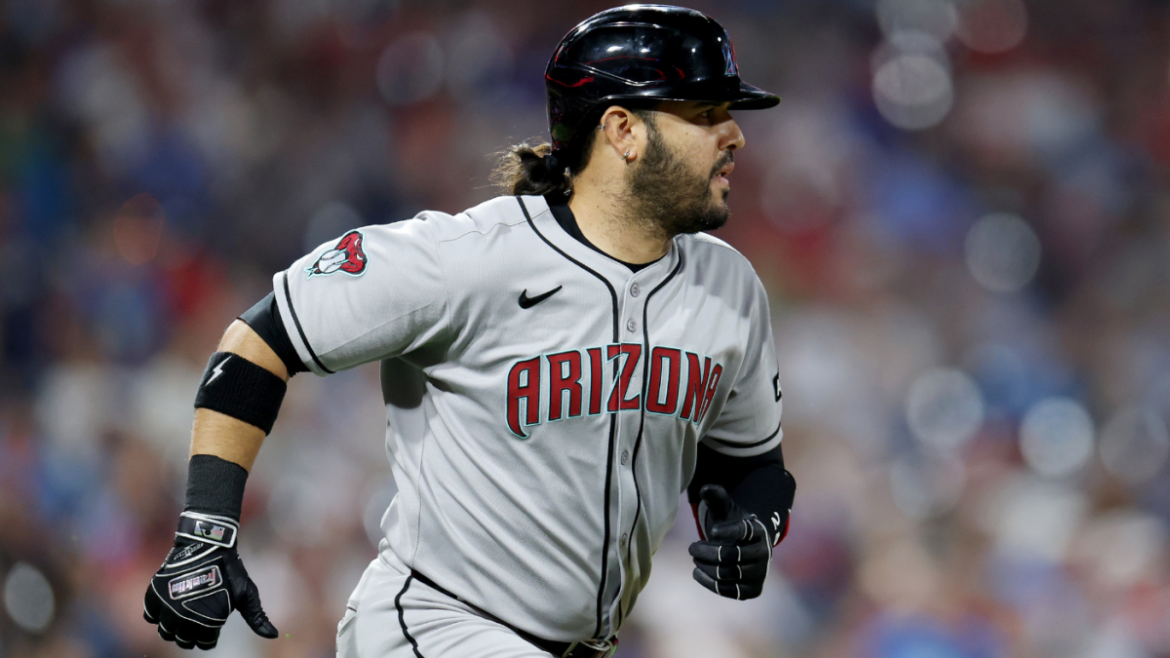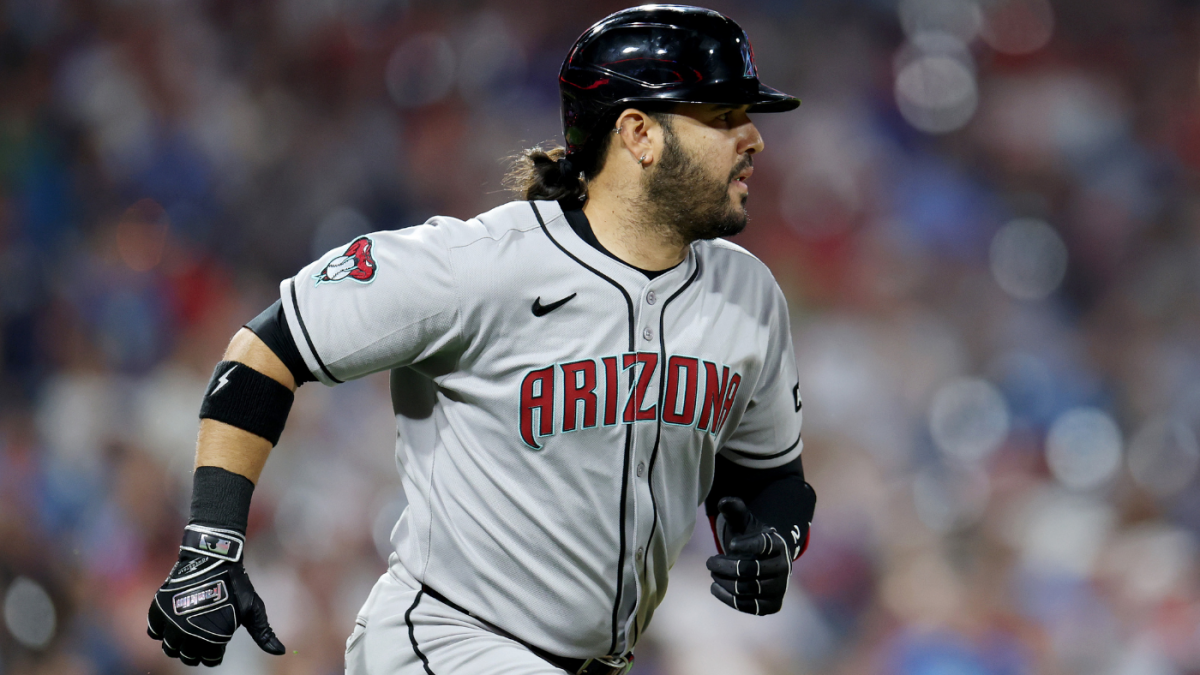The Fragility of the Game: Eugenio Suárez’s Injury Scare and Its Ripple Effects
Baseball, often romanticized as America’s pastime, is a game of split-second decisions, where milliseconds can alter the course of a season. The recent injury scare involving Arizona Diamondbacks third baseman Eugenio Suárez underscores this fragility, revealing how a single pitch can send shockwaves through a team, a trade market, and even the psyche of a player. The incident, though ultimately non-catastrophic, offers a microcosm of the pressures and uncertainties that define Major League Baseball.
A Moment Frozen in Time
The incident occurred during a game against the Detroit Tigers, though conflicting reports initially muddied the details. Suárez, a cornerstone of the Diamondbacks’ lineup and a coveted trade asset, was struck by a 95.6 mph fastball. The pitch found its mark on his right index finger, sending him to his knees in visible agony. The moment was a stark reminder of the raw physicality beneath the game’s strategic elegance. For a brief, tense period, the baseball world held its breath, awaiting news of the severity of the injury.
The immediate aftermath was a flurry of speculation. Teams with interest in Suárez for potential trade deals recalibrated their strategies, while Diamondbacks fans braced for the worst. The timing of the injury, just weeks before the July 31st trade deadline, added an extra layer of drama. A serious injury could have reshaped the trade market, potentially derailing deals and altering the trajectory of multiple franchises.
The Trade Market’s Delicate Balance
Suárez’s status as a top trade candidate made the injury particularly consequential. His offensive prowess and defensive reliability had made him a sought-after commodity, with several teams reportedly vying for his services. A significant injury could have devalued him, forcing the Diamondbacks to either settle for lesser returns or retain him beyond the deadline.
The incident highlighted the precarious nature of trade negotiations in baseball. Teams must weigh the immediate needs of their roster against the long-term risks of acquiring a player with a recent injury history. In Suárez’s case, the negative X-ray results were a relief, but the psychological and physical toll of being hit by such a high-velocity pitch could not be ignored. Potential suitors would have scrutinized his subsequent performances, looking for any signs of diminished effectiveness or lingering apprehension at the plate.
The Human Element: Suárez’s Recovery and Mindset
While the medical prognosis was encouraging, the human element of the injury cannot be overlooked. Being hit by a pitch at such speed is a traumatic experience, one that can leave lasting psychological scars. Suárez’s ability to shake off the incident and return to his previous form would have been crucial not only for his own confidence but also for the Diamondbacks’ playoff aspirations.
The Diamondbacks’ approach to Suárez’s recovery would have been methodical, balancing the need for rest and rehabilitation with the urgency of getting him back on the field. A premature return could have exacerbated the injury, while an extended absence could have disrupted the team’s chemistry and performance. The delicate dance between health and performance is a constant challenge for MLB teams, one that requires a blend of medical expertise, strategic foresight, and a deep understanding of the player’s mental state.
A Pattern of Incidents: Shane Smith and the Unseen Risks
The incident also raised questions about the recurring nature of such events. Shane Smith, the pitcher responsible for the HBP, had previously struck Suárez in June, causing him to miss time. Smith’s tendency to hit batters—he led the league with 10 HBPs on the season—suggested a pattern that could not be dismissed as mere coincidence. While accidental HBPs are an accepted part of the game, the frequency of these incidents with Smith prompted further scrutiny.
This recurring theme adds a layer of complexity to the narrative. It forces teams to consider not just the immediate impact of an injury but also the broader context in which it occurs. Are certain pitchers more prone to such incidents? How do teams mitigate these risks? These questions are not just academic; they have real-world implications for player safety and team strategy.
The Broader Implications: A Game of Inches and Seconds
The Eugenio Suárez incident is a microcosm of the broader challenges facing Major League Baseball. The game is a delicate balance of skill, strategy, and luck, where a single moment can alter the course of a season. Teams must navigate these uncertainties with a blend of caution and aggression, always aware of the fine line between success and setback.
For Suárez, the incident was a reminder of the fragility of his craft. Baseball is a game of inches and seconds, where a split-second decision can mean the difference between glory and disappointment. His ability to overcome this setback and return to his previous form would be a testament to his resilience and the support system around him.
For the Diamondbacks, the incident was a wake-up call. It underscored the importance of player health and the need for a comprehensive approach to injury management. The team’s ability to navigate this challenge would be a critical factor in their pursuit of postseason success.
Conclusion: A Lesson in Resilience
Eugenio Suárez’s injury scare was a stark reminder of the unpredictable nature of baseball. It highlighted the delicate balance between player health and team aspirations, the psychological toll of injury, and the broader implications for the trade market. While the negative X-ray results offered a reprieve, the incident served as a valuable lesson in resilience.
Baseball is a game of moments, where every pitch, every swing, and every slide carries the potential for both triumph and adversity. The Eugenio Suárez incident was a testament to this truth, a reminder that in the world of professional sports, the only constant is change. The ability to adapt, to overcome, and to emerge stronger is what defines the greats. For Suárez and the Diamondbacks, this incident was not just a setback but an opportunity to demonstrate their mettle and their commitment to excellence.





